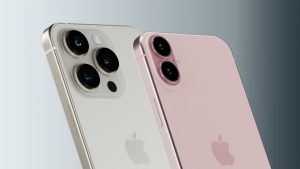
Apple’s Bob Borchers — image credit: EFTM

Apple’s Bob Borchers is in Australia for the launch of Apple Intelligence where he says he expects the new features will become a natural part of users’ daily life.
As Apple releases iOS 18.2, alongside the new update macOS Sequoia 15.2, Apple Vice President of Worldwide Product Marketing, Bob Borchers, has been speaking to local YouTube channel EFTM about why the company thinks it’s so important.
“So the great thing about Apple intelligence is you don’t have to go and find it… it’s right there when you need it and where it is,” said Borchers. “And so in that regard, it’s going to be incredibly easy for customers to engage and discover and make use of [and] we think it’s going to be just woven into your daily experience.”
“For me as somebody who gets many, many emails a day, Apple intelligence allows me to get through them very, very quickly,” he continued. “I don’t even think about it anymore, it’s just there, it’s available to me.”
“And we think for many of our customers, they’re going to find those features, whether it’s Siri, whether it’s writing tools, whether it’s image generation, that just is going to be a natural part of their daily life,” said Borchers.
Borchers was asked about privacy and the risks of a user’s personal data being used by AI services. “Yeah, AI and all of these technologies have to be grounded in a privacy promise that people can understand and that they can trust,” he said. “It’s a core principle of Apple, we believe that privacy is a fundamental human right.”
He says that much of Apple Intelligence happens on device — “your data never leaves your device, it is with you and you’re in complete control.” For AI work that needs more than can be done on-device, he stressed how Apple has created Private Cloud Compute, which securely sends requests to ChatGPT without either that service or Apple itself retaining the information.
Borchers became vice president of worldwide marketing for Apple in 2019. He had previously worked on the iPod and the launch of the iPhone, before joining Dolby and later Google.
Apple’s history of AI and Machine Learning
Echoing Tim Cook’s statement that Apple began looking at AI in 2017, Borchers stressed how the company has been using such technology for years, and so is not behind the rest of the industry.
“You know, the camera systems in iPhone use computational photography, which is built on AI and ML [Machine Learning],” he said. “Some of our most life saving features like AFib and crash detection use AI and ML. So we’ve been using it and investing in it for many years and building on top of Apple Silicon to make that happen.”
None of that is necessarily the kind of generative AI that Apple Intelligence offers, however. “With Apple intelligence, what we wanted to do was to make sure that we were delivering it in a way that our customers would expect and that Apple would deliver something that’s easy to use, that’s intuitive, that’s personal and ultimately is private.”
The release of iOS 18.2 and macOS Sequoia 15.2 marks the latest step in the extended rollout of Apple Intelligence. More will come throughout 2025, and it will also come to more countries.




